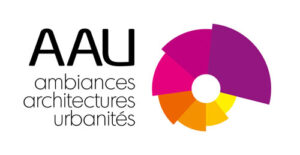The Ambiances Journal is a by-product of the International Ambiances Network and is intended to present research works in the domain of sensory environment, architecture and urban space
The aim is to put to the test how we live in places and conceive of the contemporary world with a sensory perspective. By introducing the human sensorium into architectural and urban spaces, the methods for designing and producing the built environment are presented in a fresh light, the inhabitant experiences and workaday urban situations are enhanced and the changes of the ecological, sociological and aesthetic urban transformations can be evaluated.
Pluri-sensorial
The domain of ambiances has developed apace over the past twenty years or so, focusing in particular on material atmospheres, perceptive configurations, physical phenomena, “affective tonality” of places and everyday practices of city dwellers. It lies at the very heart of any sensorial approach of inhabited spaces and reflects the sheer diversity of the senses (light, sound, heat, smell, air flows, kinesthetic, touch, etc.). Obviously, pluri-sensorial and inter-sensory researches are especially welcome.
Multi-disciplinary
As research into ambiances lies at the juncture between sensorial, built and social forms it requires a multi-disciplinary perspective. It may focus on a physical context dealing with the propagation of signals in a built space, on a social aesthetic that examines shared sensorial experiences, or on project design and practice that focus on the sensorial aspects of built spaces. One of the core aims of this review is to forge multi-disciplinary research links between the social sciences, engineering sciences, architecture and urban studies.
Multi-scale
Although it is concerned with analyzing the sensorial world as it relates to built environments and spatial and other material planning approaches, this research field does not lay down any pre-determined – micro or macro – scalar hierarchy. It can be defined using multi-scalar – ergonomic, architectural, urban or territorial – criteria so that any built space or living pattern may be analyzed in sensorial terms.
Architectural and urban ambiances welcome any research that analyses the sensorial production of the contemporary world and they are characterised by diverse approaches and wide-ranging contributions that underpin their inherent richness. The Ambiances journal strives to provide a suitable forum by drawing research into new relationships between design and living, between what is measured and characterised, what is projected and actually experienced, and between the tangible and the intangible.
The Ambiances journal is supported by the CNRS Institute for Humanities and Social Sciences (InSHS)



